Last updated on March 29th, 2022
Our site is reader supported, this means we may earn a small commission from Amazon and other affiliates when you buy through links on our site.
If you are growing a citrus plant, you need to be on the lookout for specific citrus tree problems. Knowing what problems are common can help you recognise the symptoms when they manifest and learn how to prevent those problems in future.
Below we go over some of the most common citrus problems, starting with Mealybugs.
Learn more about growing citrus trees by clicking here
Citrus Pests
Mealybugs
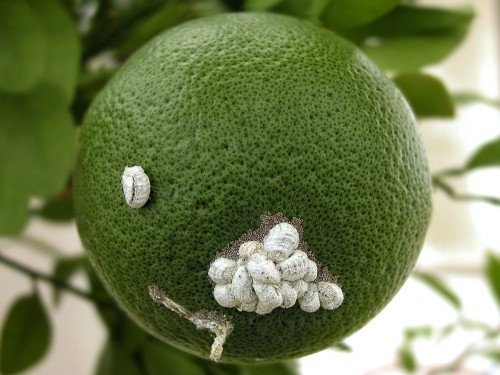
The first is the mealybug. These are small bugs that look white to the eye because of the meal that covers them. They often get underneath loose bark or in leaf joints where they suck out the sap and leave in its place honeydew. This honeydew causes sooty mould on your leaves, which is easily identifiable.
One thing you can do to prevent this naturally is to release ladybirds early in the season. Ladybirds are natural predators and will do away with this pest quickly. Other control measures include commercial products that you spray on at the first signs of mealybugs. This is usually a problem when they are grown outdoors over summer.
Glasshouse Red Spider
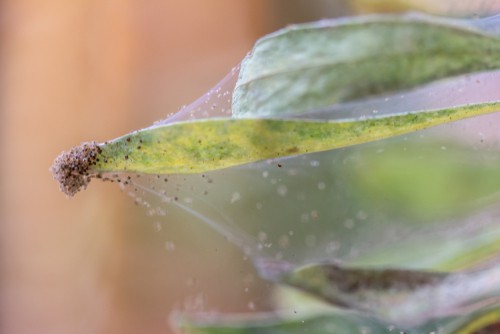
Another pest problem that usually occurs when grown inside a greenhouse or your home is red spider mites. If these are your issue you will see the leaves on your citrus plant becoming mottled, quite pale in colour, and covered in webbing. The problem with these pests is the size; they are so small you often don’t notice them on the plant until their tell-tale webbing appears strewn between leaves. If left untended, the leaves will eventually drop off prematurely.
You can remedy this with biological controls and products. Be advised that they thrive in hot, dry conditions so one preventative measure is to regularly mist the citrus leaves themselves when the weather gets warm.
Learn how to grow citrus trees in pots in our beginners guide by clicking here
See our top recommended citrus trees to grow by clicking here
Scale Insects
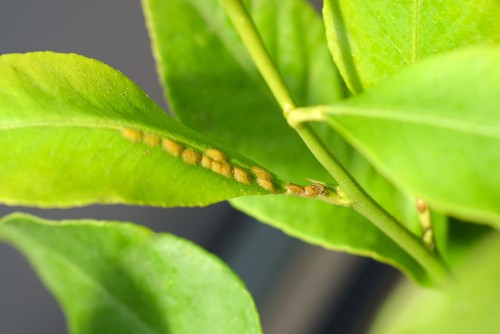
Finally, you need to look out for scale insects. These are small, yellow insects that literally have scales and can be found on the underside of the leaves. They, like the other pests, will suck the sap out of the citrus and leave in its place honeydew that eventually manifests in sooty mould.
To combat this problem, you should also exercise biological controls. Make sure the commercial products you use won’t harm the citrus if you plan to consume it. Apply these measures quickly to prevent it from spreading, especially if you have other plants nearby. It’s important that you spray them they are still very small because sprays become less effective as they get mature.
Nutrient Problems with Citrus
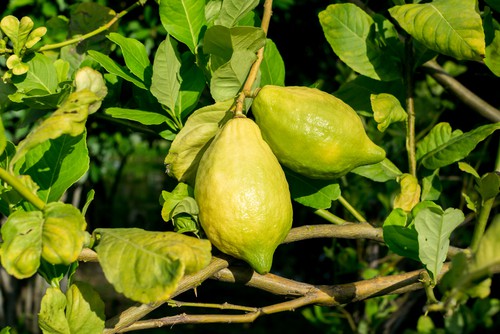
Other common problems associated with citrus trees vary slightly depending on the type of tree you have. Nutritional deficiencies are something you want to look out for because these can result in citrus trees losing their leaves and turning yellow.
Feeding with a citrus feed or even repotting them if the plant is root bound can resolve this issue and add nutrients back into the soil.
On the opposite end of the spectrum, you have to worry about too much fertiliser which can burn the plant from the inside out. Obviously, the best way to take care of this is to add fertiliser when necessary, which is once a month during the spring and summer and only once every quarter during the autumn and winter. Be advised that if you have a new plant, you shouldn’t be adding fertiliser for the first year. Always read the application guide on the citrus feed label to ensure you are mixing at the correct rate.
Cold Damage
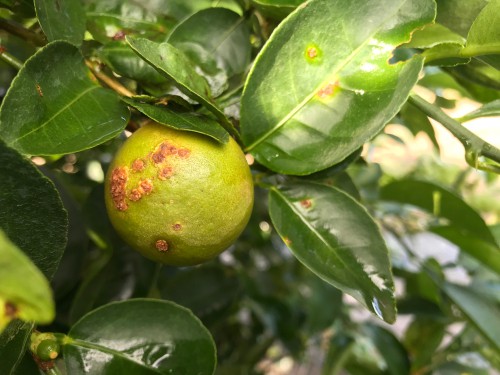
Cold weather is particularly damaging and can result in winter leaf drop, especially for younger trees if they aren’t protected. You can offset these risks by monitoring the weather and moving your plants inside or to a more protected area when winter strikes. Ideally, you want to maintain a winter night temperature above 10°C (50°F) for limes and lemons, with Calamondin oranges being able to withstand slightly colder temperatures and Kumquats will even tolerate night time temperatures as low as 7°C (45°F). Once the night time temperatures are getting close to this it’s time to bring them indoors for the winter.
Citrus Diseases
Almost all of the diseases that affect citrus plants will manifest in the form of yellowing leaves, black and brown spots, and damaged fruit. Alternaria leaf spot, for example, manifests in brown spots, blackening of the leaf veins, or shrunken fruit with black or brown spots. This condition, like most, should be treated with fungicides designed for fruit. We also recommend treating citrus with copper fungicide to help prevent them in the first place.
Overall, the majority of pests that cause problems for citrus are quite small, and you need to be particularly fastidious about looking out for them otherwise you won’t notice the problem until it is too late and fairly hard to rectify, which sometimes means removing all affected leaves. Similarly, diseases and other problems can be prevented by maintaining the right growing conditions and only adding food and water when necessary.


